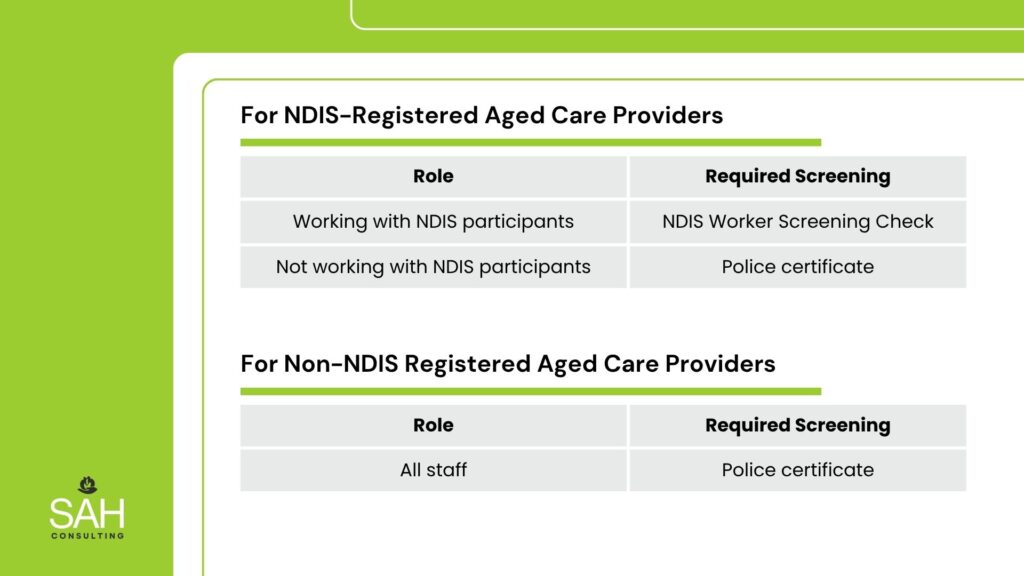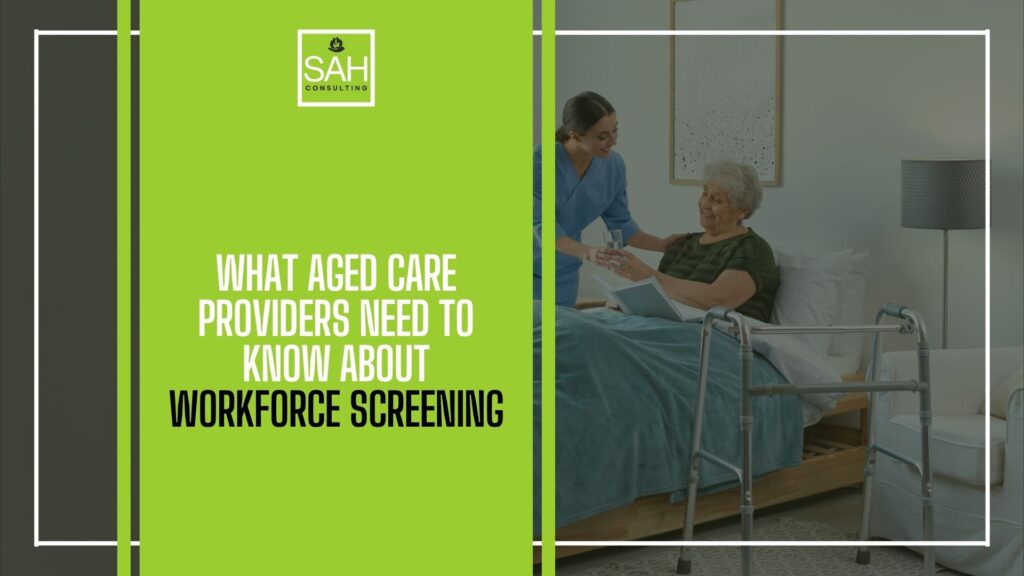If you work in aged care, you already know how much trust older Australians place in you. With Australia’s population ageing fast, the demand for safe, reliable, and high-quality care at home is only growing. At the same time, the rules and expectations around aged care are changing.
One of the biggest changes coming your way is the Support at Home (SAH) program, set to launch on 1 July 2025. This new program will replace both the Commonwealth Home Support Programme (CHSP) and Home Care Packages (HCP). The goal? To make sure older Australians get care that’s not just high-quality, but also person-centred, flexible, and safe.
As a provider, you’ll need to meet new standards to be part of this system. That includes how you hire and screen your staff. Workforce screening isn’t just a formality. It’s one of the key ways you show that your team is trustworthy, safe, and ready to care with dignity.
If you’re wondering how to become a home care provider for the elderly, understanding workforce screening is a must. It plays a huge role in meeting compliance, earning trust, and delivering care that truly makes a difference.
Let’s walk through what you need to know.
Understanding Aged Care Workforce Screening in Australia
When you’re caring for older people in their homes, trust is everything. Families and care recipients want to feel confident that the people supporting them are safe, respectful, and qualified. That’s where workforce screening comes in.
What is Workforce Screening?
Workforce screening is a legal process that checks a person’s background before they start working in aged care. It looks into their criminal record and any past misconduct. This applies to everyone on your team–paid workers, casual staff, and even volunteers.
The purpose is simple: to protect the health, safety, and dignity of older Australians. Whether you’re a small provider or part of a larger group, this step matters. It helps create a safer, more respectful care environment and shows you’re serious about quality.
What Does the Screening Involve?
There are two main types of checks involved:
- Police checks (also called police certificates): These look at a person’s national criminal history.
- NDIS Worker Screening Checks: These go deeper and are required in certain situations, especially if your staff support NDIS participants.
If you’re one of the Home Care Package providers preparing for the new Support at Home program, understanding which check applies and when is key. You want to make sure every staff member is cleared and compliant before they step into someone’s home.
Current Screening Options and Who Needs What
Workforce screening isn’t a one-size-fits-all process. If you’re learning how to become a home care provider for the elderly, understanding these screening requirements is a critical first step. What your team needs depends on two main things:
- Are you registered with the NDIS?
- Does the role involve NDIS participants or fall into a risk-assessed category?
Let’s break it down so it’s easy to follow.

For NDIS-Registered Aged Care Providers
If you’re registered with the NDIS, your screening requirements will depend on whether your team works directly with NDIS participants.
| Role | Required Screening |
| Working with NDIS participants | NDIS Worker Screening Check |
| Not working with NDIS participants | Police certificate |
For Non-NDIS Registered Aged Care Providers
If you’re not registered with the NDIS, it’s easier:
| Role | Required Screening |
| All staff | Police certificate |
Already have an NDIS Worker Screening Check? Good news, you don’t need a separate police certificate. The NDIS check is accepted across both the aged care and disability sectors. That saves time and paperwork for you and your team.
Getting your workforce screening right is an essential step in your compliance journey. If you’re working through Aged Care provider registration or exploring how to become a home care provider for the elderly, you’ll need to show that every person on your team has the right clearance.
The New Aged Care Worker Screening Check
Coming in 2026 – What You Need to Know
There’s a big change coming. In 2026, the government will roll out a new national screening check for aged care workers. This will bring consistency across all states and replace the current patchwork of checks. It’s meant to make things clearer and safer for everyone involved.
This new check will apply to what’s called “risk-assessed roles.” That means if someone on your team provides direct care, holds a leadership role like CEO or Board Member, or has more than just casual contact with care recipients, they’ll need this check.
But there’s no need to stress right now. The check won’t be required until 2026. If your team already has valid police certificates, they can keep using them until they expire. There will also be clear transition steps, and the government plans to give plenty of notice before the change takes effect. You’ll have time to get ready.
We’ll be keeping a close eye on this rollout. At SAH Consulting, we’ll make sure you stay updated and on track so you’re fully prepared when the new system kicks in.
The NDIS Worker Screening Check – What It Is and When It Applies
You may have already come across the NDIS Worker Screening Check. It’s a thorough background check used in the disability sector, but it also applies to aged care workers in some situations, especially if they support NDIS participants.
This check looks into a person’s national criminal history and includes any reportable incidents or disciplinary action from the past. It also includes a risk assessment to determine if the person is safe to work with vulnerable individuals. The process runs through state or territory screening units, and they do it on behalf of the NDIS Quality and Safeguards Commission.
Depending on the role, some workers may also need a Working with Children Check. And in some states, workers can begin their job while their application is still being processed, as long as the rules allow it. Once approved, the result of the screening gets recorded in the NDIS Worker Screening Database (NWSD), where providers can check status and clearance details.
SAH Consulting’s Role in Preparing Your Team
Getting ready for the Support at Home program can feel like a lot. But you don’t have to figure it all out alone. That’s where we come in.
At SAH Consulting, we help aged care providers like you understand what workforce screening compliance really means, without the jargon. We walk you through what checks your team needs, how to keep your documentation in order, and how to make sure you’re ticking all the right boxes for registration.
We also support you in registering as a Support at Home service provider. Whether you’re just starting or transitioning from CHSP or HCP, we’ll guide you step by step so you can meet all the requirements confidently.
Most importantly, we make sure you’re prepared for what’s coming. With major reforms ahead, it’s easy to miss key updates or timelines. But we stay across it all so you don’t have to. That way, you can keep your focus where it matters most, delivering safe, high-quality, person-centred care to older Australians.
Conclusion
Workforce screening isn’t optional, it’s a key part of keeping older Australians safe and respected. As the Support at Home program approaches, staying compliant shows your commitment to quality care. If you’re unsure how to become a home care provider for the elderly or need help understanding the screening process, we’ve got you covered.
At SAH Consulting, we take the guesswork out of compliance so you can focus on delivering great care. Reach out to us for a free consultation, we’re here to help you prepare with confidence.
